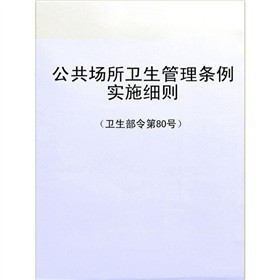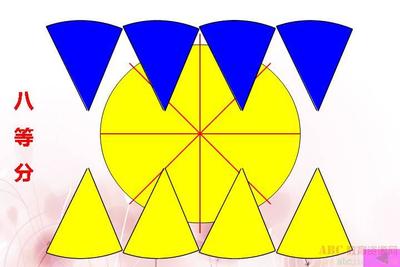The Syllabus of “The Fundamentals of ModernLogistics”
《现代物流管理基础》课程教学大纲
Course Code:110220037
ClassHour:64Credit Hour:4
Teaching Objects:Logistics management and marketing majors
Advance Course:
Made by:LiXiaohongChecked by:
Ⅰ Teaching Objectives and Tasks
“The Fundamentals of Modern Logistics” is a core course forlogistics management students. It’s an introductory art course forlogistics discipline, introducing the many dimensions of thecomplex and dynamic subject of logistics and its role within supplychain management. After studying this course, students may knowwhat is logistics, how logistics work, how to use logistics tomanage demand and order more efficiently, and learn about theelements of modern logistics system, such as protective packaging,materials handling, transportation, distribution, warehousing,inventory management, procurement, information technology,logistics system control and so on. This course gives students ageneral and systematic understanding about logistics and supplychain management. However if students want to go on an in-depthstudy, they must learn more.
This course uses two languages in order to facilitate studentslearning another language and expertly using English to self-studyprofessional knowledge. Students would skillfully understand theelementary knowledge of logistics science after learning, and viewlogistics as a complex and dynamic system.
Ⅱ Teaching Content and Demand
Chapter 1 Logistics and the supply chain
Class Hour: 8
Teaching content and demand:
(1)To learn the definition of logistics
(2)To understand the economic importance of logistics
(3)To learn of recent events and their influences on logisticspractices
(4)To gain an understanding of logistics practices with a firm
(5)To learn different pricing policies
(6)To know about logistics careers
Teaching important points:
Key terms, the definition of logistics, the economic importance oflogistics, recent events and their influences on logisticspractices
Teaching difficult points:
Recent events and their influences on logistics practices, thedifferent pricing policies
Chapter 2 The supply chain management concept
Class Hour: 4
Teaching content and demand:
(1)To learn about supply chains and their management
(2)To understand difference between transactional and relationalexchanges
(3)To realize the importance of leveraging technology
(4)To appreciate barriers to supply chain management
Teaching important points:
Supply chains and their management, difference betweentransactional and relational exchanges, the importance ofleveraging technology
Teachingdifficult points:
Difference between transactional and relational exchanges, barriersto supply chain management
Chapter 3 Logistics and information technology
Class Hour: 4
Teaching content and demand:
(1)To appreciate the importance of effective and efficientutilization of information for logistics management
(2)To learn about general types of information systems and theirlogistical applications
(3)To understand key differences between the logistics of onlineshopping and the logistics of traditional shopping
Teaching important points:
General types of information systems and their logisticalapplications
Teaching difficult points:
Generaltypes of information systems and their logistical applications,importance of effective and efficient utilization of informationfor logistics management
Chapter 4 Demand management, order management and customerservice
Class Hour: 6
Teaching content and demand:
(1)To understand demand forecasting’s role in logisticsmanagement
(2)To understand the order cycle and its role in logisticsmanagement
(3)To understand the dimensions of customer service
(4)To examine the establishment of customer service objective
(5)To describe the measurement and control of customer service
Teaching important points:
The order cycle and its role in logistics management, thedimensions of customer service
Teaching difficult points:
The order cycle and its role in logistics management, themeasurement and control of customer service
Chapter 5 Protective packaging and materials handling
Class Hour: 8
Teaching content and demand:
(1)To know how product features and characteristics affectpackaging and materials handling
(2)To indentify the function performed by packaging
(3)To appreciate select issues that affect packaging and packagechoice
(4)To analyze the utilization of unit loads in materialshandling
(5)To indentify materials handling principles and materialshandling equipment
Teaching important points:
The function performed by packaging, the utilization of unit loadsin materials handling, materials handling principles and materialshandling equipment, select issues that affect packaging and packagechoice
Teaching difficult points:
The utilization of unit loads in materials handling, materialshandling principles and materials handling equipment, select issuesthat affect packaging and package choice
Chapter 6 Transportation and transportationmanagement
Class Hour: 6
Teaching content and demand:
(1)To learn about the five modes of transportation
(2)To understand trade-offs between the five modes
(3)To realize the role of freight forwarders and othertransportation specialists
(4)To understand the legal classification of carriers
(5)To learn about contemporary transportation management
(6)To understand how rates are determined
Teaching important points:
Five modes of transportation, how rates are determined
Teaching difficult points:
Five modes of transportation, trade-offs between the five modes,the legal classification of carriers, how rates are determined
Chapter 7 Distribution center, warehouse, and plantlocation
Class Hour: 6
Teaching content and demand:
(1)To examine the screening or focusing concept of plant orwarehouse location
(2)To explain the general process of determining the optimum numberof facilities
(3)To describe the major factors that influence facilitylocation
(4)To examine a site’s specialized location characteristics
(5)To explain systems to determine the location that minimizestransportation costs
Teaching important points:
The general process of determining the optimum number offacilities, the major factors that influence facility location
Teaching difficult points:
The general process of determining the optimum number offacilities, systems to determine the location that minimizestransportation costs
Chapter 8 Inventory management
Class Hour: 6
Teaching content and demand:
(1)To determine the costs of holding inventory
(2)To indentify the costs associated with a stockout
(3)To understand the EOQ concept
(4)To differentiate the various inventory flow patterns
(5)To indentify several contemporary approaches to managinginventory
(6)To discuss special concerns with inventory management
Teaching important points:
The costs of holding inventory, the EOQ concept, severalcontemporary approaches to managing inventory
Teaching difficult points:
The EOQ concept and calculating, differentiate the variousinventory flow patterns
Chapter 9 Warehousing management
Class Hour: 6
Teaching content and demand:
(1)To understand the role of warehouses and distribution centers ina logistics system
(2)Toidentify the various types and functions of warehouses
(3)To distinguish the various alternatives available in warehousedesign
(4)To examine the different types of handling equipmentavailable
(5)To analyze the issue of employee safety in warehousing
Teaching important points:
The role of warehouses and distribution centers in a logisticssystem, the various types and functions of warehouses, the variousalternatives available in warehouse design
Teaching difficult points:
The various types and functions of warehouses, the variousalternatives available in warehouse design
Chapter 10 Procurement
Class Hour: 4
Teaching content and demand:
(1)To understand the distinction between procurement, purchasingand supply management
(2)To learn about supplier selection and uation
(3)To understand quality issues in procurement
(4)To learn about electronic procurement
(5)To appreciate socially responsible procurement
Teaching important points:
Supplier selection and uation, quality issues in procurement,electronic procurement
Teaching difficult points:
Electronic procurement, distinction between procurement, purchasingand supply management
Chapter 11 Logistics systems controls
Class Hour: 4
Teaching content and demand:
(1)To examine accounting control in a logistics system
(2)To learn about worker productivity
(3)To discuss issues associated with returned goods management
(4)To learn about theft and ways to manage it
(5)To examine the impact of terrorism on logistics systems
Teaching important points:
Worker productivity, issues associated with returned goodsmanagement
Teaching difficult points:
Accounting control in a logistics system
Ⅲ Experiment and Practice
None
Ⅳ Teaching Arrangement
Chapter | contents | Class hours | training hours | practice hours | Total hours |
Chapter 1 | Logistics and the supply chain | 8 | 8 | ||
Chapter 2 | The supply chain management concept | 4 | 4 | ||
Chapter 3 | Logistics and information technology | 4 | 4 | ||
Chapter 4 | Demand management, order management and customer service | 6 | 6 | ||
Chapter 5 | Protective packaging and materials handling | 8 | 8 | ||
Chapter 6 | Transportation and transportation management | 6 | 6 | ||
Chapter 7 | Distribution center, warehouse, and plant location | 6 | 6 | ||
Chapter 8 | Inventory management | 6 | 6 | ||
Chapter 9 | Warehousing management | 6 | 6 | ||
Chapter 10 | Procurement | 4 | 4 | ||
Chapter 11 | Logistics systems controls | 4 | 4 | ||
Review | Review | 2 | 2 | ||
Total class hours | 64 | 64 |
Ⅴ Textbook and References
(1) Paul R. Murphy, Jr., Donald F. Wood, “Contemporary Logistics(Ninth Edition)” China Renmin University Press, 2009.
(2) Donald J. Bowersox, David J. Closs, M. Bixby Cooper, “SupplyChain Logistics Management (2nd Edition)”, China MachinePress, 2008.
(3) Wang Aihu, “Professional English for Logistics and Supply ChainMangement”, Beijing Institute of Technology Press, 2006.
Ⅵ Final-examination
The student’s achievement score of this course is composed ofregular grade and final examination result. Final student score=regular grade score*30%+ final examination score*70%.
 爱华网
爱华网


